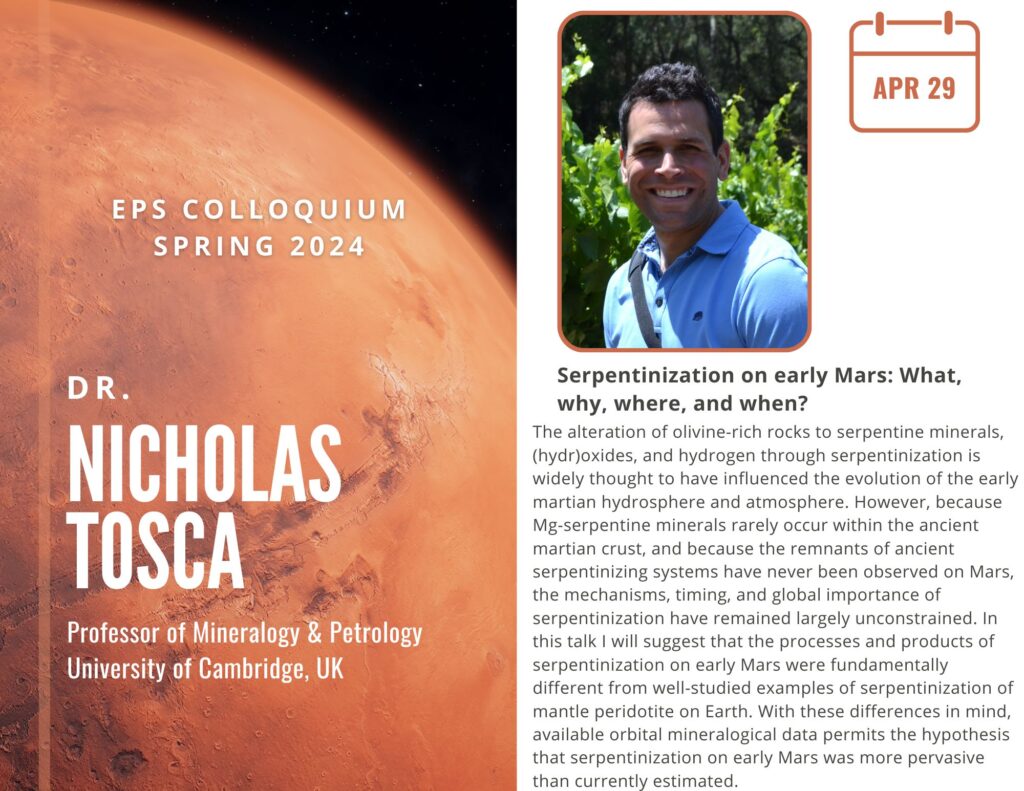EPS Colloquium – Nick Tosca, University of Cambridge
Serpentinization on early Mars: What, why, where, and when?
The alteration of olivine-rich rocks to serpentine minerals, (hydr)oxides, and hydrogen through serpentinization is widely thought to have influenced the evolution of the early martian hydrosphere and atmosphere. However, because Mg-serpentine minerals rarely occur within the ancient martian crust, and because the remnants of ancient serpentinizing systems have never been observed on Mars, the mechanisms, timing, and global importance of serpentinization have remained largely unconstrained. In this talk I will suggest that the processes and products of serpentinization on early Mars were fundamentally different from well-studied examples of serpentinization of mantle peridotite on Earth. With these differences in mind, available orbital mineralogical data permits the hypothesis that serpentinization on early Mars was more pervasive than currently estimated. In remarkable consistency with these expectations, new texturally-resolved geochemical and mineralogical data from multiple instruments aboard the Mars 2020 Perseverance Rover directly record serpentinization and associated H2(aq) production in ancient igneous rocks of the Jezero Crater floor. These data indicate that serpentinization was driven by devolatilization of magmatic H2O, raising the possibility that the timing and extent of serpentinization on early Mars may have been linked to the style and tempo of magmatism within Mars’s relatively thick basaltic crust
To be added to the EPS colloquium mailing list, please contact Caroline Carr at carolinecarr@fas.harvard.edu.
Recording unavailable

Nick’s research focuses on the application of aqueous geochemistry and mineralogy to understand the processes that shape planetary surfaces and their environments through time. His research group integrates theoretical, experimental, and field-based observations to constrain the chemistry of natural waters that have interacted with modern and ancient sediments and rocks. He is the Associate Director of the Leverhulme Centre for Life in the Universe and a science team member of the Mars 2020 Perseverance Rover mission.

